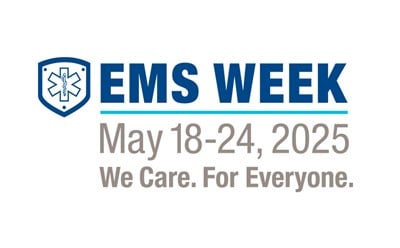WASHINGTON, D.C.—Much attention is given to opioid overdose, but opioid withdrawal is a high-risk period where patients could experience serious health complications or revert to misuse or abuse, according to a new clinical review in Annals of Emergency Medicine.
“If left untreated, opioid withdrawal commonly results in a return to high-risk opioid use, with greater risk of overdose or death following discharge,” said Andrew Herring, MD, an emergency physician and Medical Director of the Substance Use Disorder Program for Highland Hospital in Alameda, California and review co-author. “MAT [medication-assisted treatment] administered in the emergency department helps patients avoid health complications and ease into longer-term treatment and recovery.”
For patients in withdrawal, abstinence without medical intervention increases the likelihood of an overdose, according to the authors.
Withdrawal due to drug cessation can include physiological signs (nausea, vomiting, diarrhea, rapid heartbeat, sweating) or psychological symptoms (anxiety, cravings, pain, dizziness) and is not typically life-threatening, although it can be extremely uncomfortable. Severe withdrawal, especially following administration of an opioid antagonist such as naloxone, can include delirium or serious cardiovascular complications.
“Despite strong evidence supporting the benefit of MAT, approaches to post-overdose treatment vary substantially,” said Jeanmarie Perrone, MD, Director of Medical Toxicology for the Department of Emergency Medicine at the University of Pennsylvania School of Medicine and co-author.
Although methadone is still used, buprenorphine is the preferred medication for most patients, especially in the emergency department. However, there is currently no definitive approach to dosing or consensus for the optimal initial dose, the authors note in the review titled, “Managing Opioid Withdrawal in the Emergency Department with Buprenorphine.”
Short-term buprenorphine administration is permitted under the Three-Day Rule, which allows discharged patients to return daily (for three days) to the emergency department in order to receive medication, while a Drug Addiction Treatment Act (DATA) waiver is required for prescribing.
Providers with appropriate waivers can prescribe buprenorphine for the duration needed to ensure the next treatment. Any provider with Drug Enforcement Agency registration can apply for a waiver following an 8-hour training program and exam.
“A plan for rapid follow-up is recommended, especially if no waivered provider is available,” said co-author Lewis Nelson, MD, Chair, Department of Emergency Medicine and Director, Medical Toxicology, Rutgers New Jersey Medical School. “This could include care coordinators, recovery coaches, or a ‘warm handoff’ to a long-term provider. Strong partnerships with other experts in the hospital and in the community encourage continuity of care after a patient is discharged.”
“The current system of care for opioid use disorder is fragmented, which poses numerous challenges for patients and for providers. Initiating MAT in the emergency department enables more connected, continuous care, which can make all the difference in a patient’s recovery,” said Dr. Perrone.
 American College of Emergency Physicians
American College of Emergency Physicians







